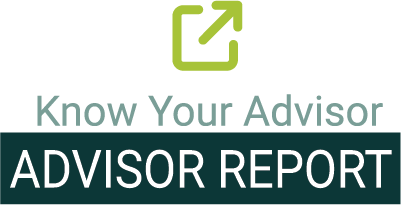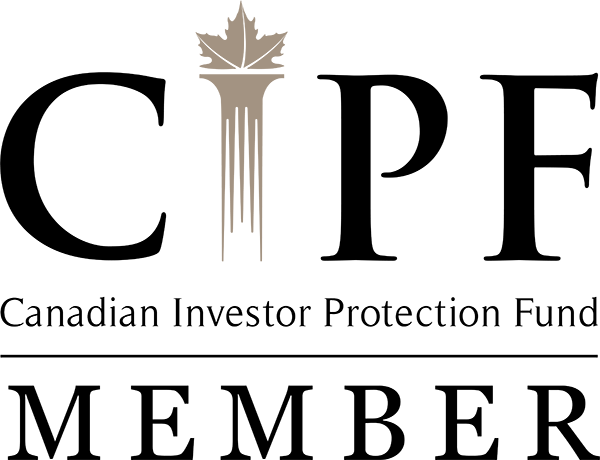How Much Do You Need to Retire in Canada?
Written by Tiffany Woodfield, CRPC®, CIM®, Dual-Licensed Financial Advisor & John Woodfield, CIM®, FMA®, FCSI®, Portfolio Manager
Reading Time: 5 minutes 53 seconds.
You're retiring to Canada from the US or elsewhere, and you wonder whether your investments will cover your retirement living. Or you're currently residing here and want to ensure that you can live the lifestyle you want.
How much do you need to retire in Canada comfortably? That's the big question people in their 40s, and 50s ask as they look at their investments and consider their future.
So let's take a look at the big picture when it comes to your financial future. As a Dual-Licensed Financial Advisor and Retirement Planner, I've seen how important it is to answer this question in a specific manner.
Not everyone requires the same investment income to live comfortably during retirement. You set the standard for the lifestyle you want during your lifetime. But one thing everyone must consider is the possible length of retirement. No matter what lifestyle you wish to enjoy, planning for a long retirement is the most intelligent approach.
How Much You Need to Retire in Canada Depends on Lifestyle Choices and Where You Live
Canada has vastly different real estate prices across the country. Where you live will significantly affect your cost of retirement. The provinces of Ontario and British Columbia have the highest real estate prices*.
The median home in Vancouver, British Columbia, is $1,298,000*CAD. Whereas in Toronto, you expect to pay just over 1 million CAD**. Vancouver, Toronto, and Calgary are the most popular places for ex-pats to live. They also have a high cost of living***.
Even smaller areas—such as the Okanagan Valley in British Columbia— have increased in popularity because of lifestyle factors. This popularity has caused housing prices to soar.
If you are retiring from a smaller town in the US to downtown Vancouver, some of your investments will likely need to cover an increased housing cost. Also, daily essentials such as clothing, food, and transportation tend to be more expensive in Canada than in the US.
*Vancouver Real Estate Market.
***Best Places to Live In Canada Article
What's the 4% Rule, and Does It Apply to You?
You may have heard of a rule of thumb called the 4% rule. It was based on the principle if you can comfortably withdraw 4% of your savings in your first year of retirement. Then you could adjust that amount for inflation for each subsequent year so you won't run out of money for 30 years. The 4% rule was based on the foundation of a portfolio with 60% bonds and 40% stocks.
The problem with the 4% rule is that everyone has a different lifestyle and different expenses. Using this rule is also assuming you will have the same spending habits throughout your retirement.
Moreover, markets can fluctuate, and you want to be prepared for that. You want to be able to relax knowing you can enjoy your lifestyle. A word of caution is that the 4% rule might leave some people with insufficient money and others with more than enough. That's because it's approaching financial planning with a one-size-fits-all strategy.
It is okay to use the 4% rule as a guideline or a starting point. Still, I would recommend doing a more detailed analysis and also consider what you are currently spending in a year.
Retirement Income versus Expenses
People are living longer. You may have already realized that your retirement could last for decades. It is important to plan, so you can enjoy the fruits of all your labour.
An excellent starting place is to look at how much money you currently take home after taxes each month. Then look at your current expenses to determine which ones you won't have in retirement.
Examples of expenses you won't have during retirement may be as follows:
- office parking
- dry cleaning
- mortgage payments
- payments for college education for your kids
Now, consider the additional expenses you will have in retirement, such as entertainment, travel, health/dental bills previously covered by your employment plans.
Doing this review will give you an idea of how much you are spending each month now and how this will change in retirement.
The 3 Stages of Retirement
You may be thinking you will spend less in retirement than you do when working. Unfortunately, this very often isn't the case.
We like to think of the three stages of retirement:
- The Go-Go Stage: This is when you stop working so hard and finally find you have time to enjoy life. You travel, go for dinners, entertain and enjoy your hobbies. We find that many of our clients spend more in this initial stage.
- The Slow-Go Stage: This is where you have started to relax in the knowledge that now you have time, you have done those bucket-list trips, and now you begin to slow down. You still enjoy travel and your hobbies but just not at the same pace as you used to.
- The No-Go Stage: This is where you don't want to travel much, and you would rather be close to home. Your health is of priority importance, and you don't want to do all the things you used to. You want relaxation and comfort.
We've seen our clients go through these stages over and over as they age through retirement. It's an excellent idea to consider how you'll experience these three stages and how they will affect your spending.
Is $2 million enough to Retire in Canada and Live Comfortably?
Often people ask, "How much is enough to retire in Canada and live comfortably?" The answer is that it depends on your lifestyle and where you want to live. Also, it also depends on what you hope to do in retirement and whether you will be increasing or decreasing your expenses. So, yes, you can live on $2 million. But keep in mind that "comfortable" is subjective and depends on personal factors.
As a rough example, if you are mortgage-free and have investable assets of $2 million and you estimate you will be earning a 5% return, this would provide $100,000 per year before taxes.
You can see this gives you a "ballpark" of how much you can earn with a $2 million portfolio. If you can live off the $100,000, you wouldn't be touching the principle, i.e. the initial $2 million. If the investments are in a sheltered account such as an RRSP or TFSA, you won't be paying tax annually on the investment growth. But when you withdraw from an RRSP, all distributions will be taxable.
If you have IRAs or 401(k)s from working in the US, these accounts' distributions will also be taxable when you withdraw.
Working closely with your wealth management team to create a financial and estate plan can help you plan for retirement. When you have a personalized and comprehensive plan, you can relax knowing what you can spend in retirement while maintaining your lifestyle.
Understanding Risk vs Growth when Investing for Retirement
Once you are 5-10 years from retirement or already in retirement, your investment goals likely will change. You have accumulated your wealth and now are concerned with protecting your investments. You also want to have tax and estate strategies. You don't have time to earn all your money back, so you may not be able to afford to take a large risk. Instead, you'll focus on long-term planning and keeping your goals in mind.
Retirement planning can seem overwhelming—even to the most well-educated and financially savvy people. But it is about understanding your long-term goals. To help with this, you can work with a wealth management team. Such a team will act as a coach, assisting you along the way.
You may also have the added complexity of a cross-border estate. If so, working with a qualified cross-border financial advisor will prevent common cross-border taxes and penalties from eating into your retirement income.
Summary of Key Points:
- Having a qualified wealth management team means you can relax, knowing there is a plan in place.
- How much you will spend in retirement is often more than you think, particularly in the first few years of retirement.
- Consider your lifestyle now, as this will impact your lifestyle in retirement.
- Time is the one thing none of us can get back.
- Tolerance for a return doesn't often match a person's tolerance for risk. In other words, while you might want to see incredible growth, you might not have the risk tolerance to handle the inevitable dips in such a strategy.
Next Steps
If you’re planning a cross-border move or you’ve already moved from the US to Canada and need help simplifying and optimizing your finances, then please get in touch. At SWAN Wealth, we specialize in cross-border financial planning and wealth management. We would be happy to ensure that you’re onside with the IRS while protecting your investments and retirement assets.
More Canadian and Cross-Border Financial Planning Articles & Guides
If you’re planning a move across the border or you’re already in Canada, these articles and guides will help you simplify and optimize your financial planning and make sure you’ve got everything covered.
The Ultimate Financial Planning Resource for Dual Citizens or Green Card Holders Living in Canada
Retiring to Canada - A Financial Planning Guide
Financial and Tax Planning for US Citizens Living in Canada
Canadian RRSP Facts for Dual Citizens, Expats and Canadians
About the Authors
Tiffany Woodfield is a dual-licensed financial advisor and the co-founder of SWAN Wealth Management, along with her husband, John Woodfield. Tiffany specializes in advising clients who live both in Canada and the United States and need to simplify their cross-border financial plan, move their assets across the border, and optimize their investments so they can minimize their tax burden. Together, Tiffany and John Woodfield, CFP and Portfolio Manager, help their clients simplify their cross-border finances and create long-term revenue streams that will keep their assets safe whether they live in Canada or the US. Click here to schedule an introductory call with SWAN Wealth Management.
John Woodfield is a Financial Management Advisor (FMA), a Chartered Investment Manager (CIM), a Certified Financial Planner (CFP), and in 2007 was inducted as a fellow of the Canadian Securities Institute (FCSI). As a portfolio manager and CFP®, he works with clients across Canada. John Woodfield’s clients are families, individuals and business owners who understand the importance of a comprehensive wealth and investment plan driven by the lifestyle they want to lead. Click here to schedule an introductory call with SWAN Wealth Management.
Schedule a Call
Book a 15-minute introductory call with SWAN Wealth Management. Click here to schedule a call.




